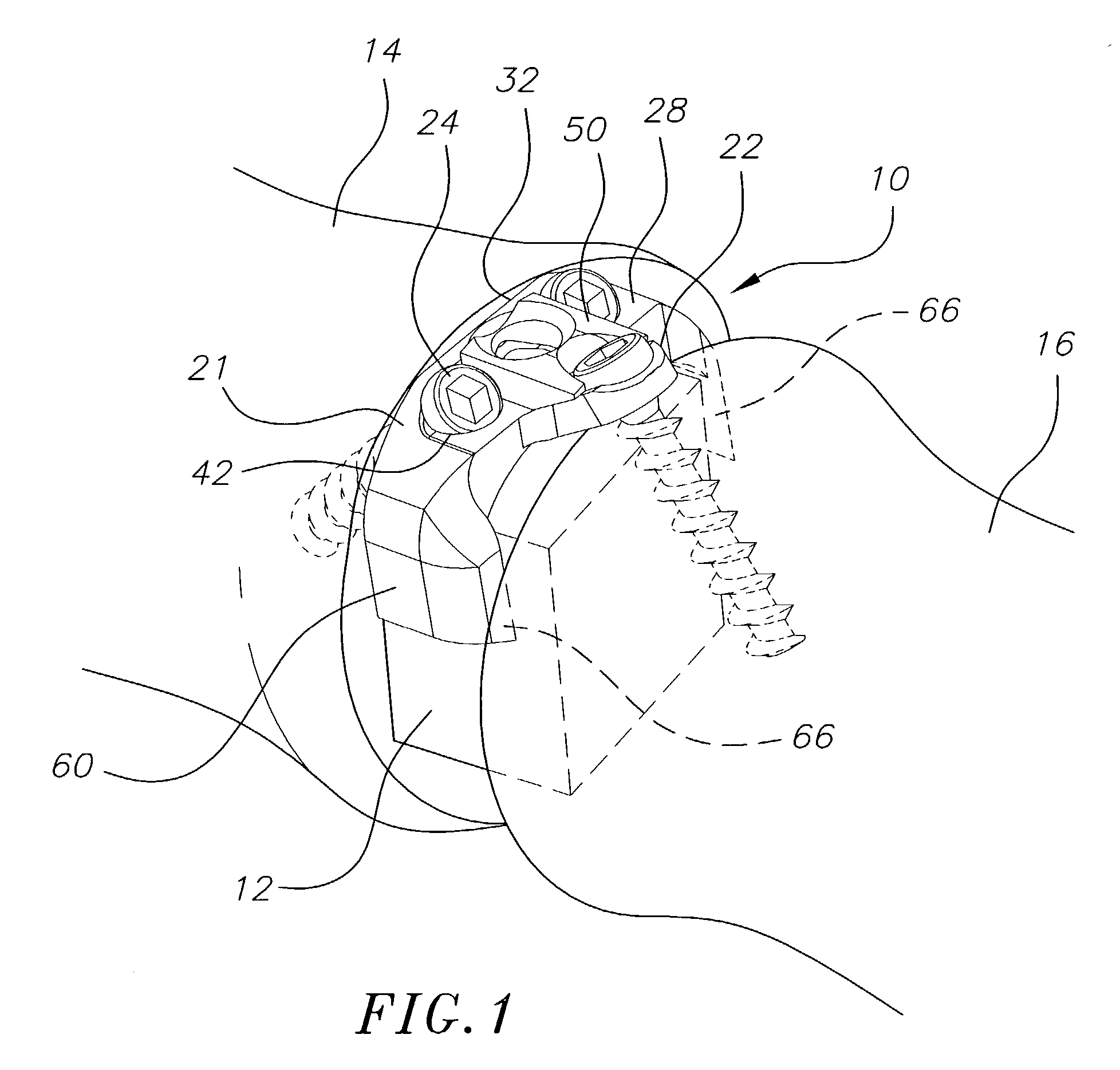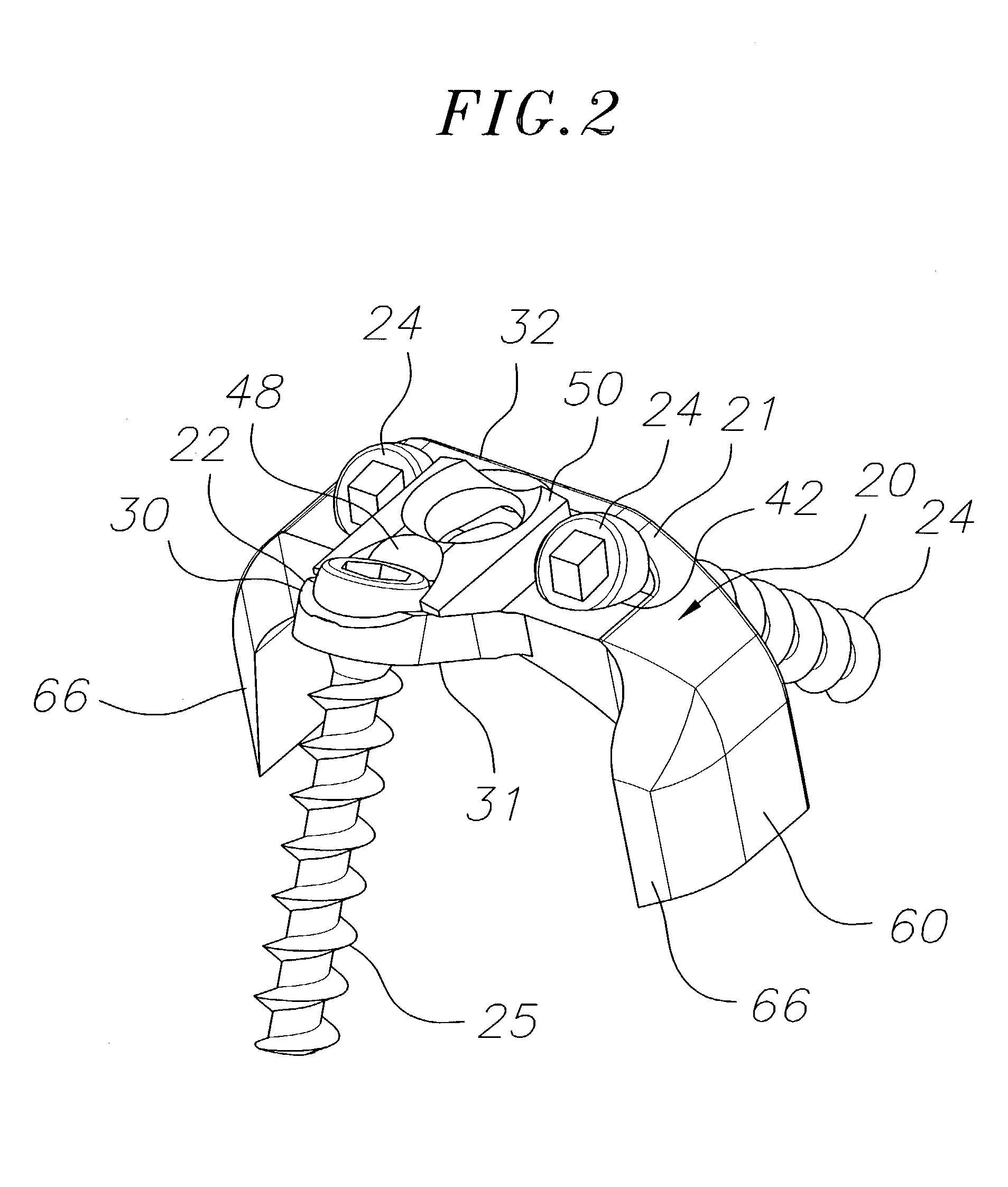Bone plate stabilization system and method for its use
a technology bone plate, which is applied in the field of bone plate stabilization system, can solve the problems of abnormal angulation or slippage of the spine, affecting the structure and function of the spinal column, and experiencing extreme and debilitating pain
- Summary
- Abstract
- Description
- Claims
- Application Information
AI Technical Summary
Benefits of technology
Problems solved by technology
Method used
Image
Examples
Embodiment Construction
[0020]The present invention is directed to a bone stabilization plate system for stabilizing two adjacent bones (including bone fragments), such as adjacent vertebral bodies, while they heal, as well as to methods for its use. A particularly preferred bone stabilization plate system 10 constructed in accordance with the present invention is shown in FIGS. 1 to 4. The depicted bone stabilization plate system comprises a base plate 20 having first and second ends, and including a primary member 21 and a secondary member 22 at the second end of the base plate. The secondary member 22 is angled relative to the primary member 21, as discussed further below, although other designs are contemplated within the scope of the invention.
[0021]The base plate 20 may be made of any suitable material, and is preferably made from titanium or a titanium alloy. The thickness of the base plate 20 is not critical, and preferably ranges from about 1 mm to about 2 mm, and more preferably is about 1.6 mm. ...
PUM
 Login to View More
Login to View More Abstract
Description
Claims
Application Information
 Login to View More
Login to View More - R&D
- Intellectual Property
- Life Sciences
- Materials
- Tech Scout
- Unparalleled Data Quality
- Higher Quality Content
- 60% Fewer Hallucinations
Browse by: Latest US Patents, China's latest patents, Technical Efficacy Thesaurus, Application Domain, Technology Topic, Popular Technical Reports.
© 2025 PatSnap. All rights reserved.Legal|Privacy policy|Modern Slavery Act Transparency Statement|Sitemap|About US| Contact US: help@patsnap.com



